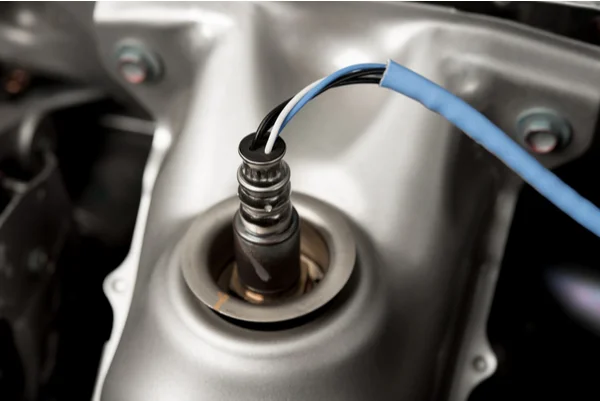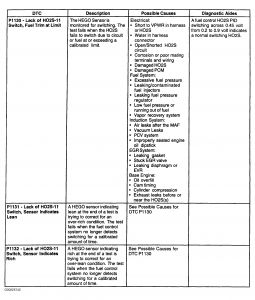
Ford engine codes p1131 code#
For these reasons, this diagnostic trouble code is considered serious. The vehicle may also be difficult to drive. While the P2263 diagnostic trouble code is stored, the vehicle may stall and shut off during operation. Neglecting to inspect oil supply lines for leaks, breaks, or loose connections before replacing the turbocharger Neglecting to inspect the vacuum lines for leaks, breaks, or loose connections before replacing the turbocharger If the turbocharger is not taken off to be inspected, this can lead to a misdiagnoses. If obstructions are visible, the turbocharger will need to be cleaned or replaced.Ĭommon mistakes when diagnosing the P2263 codeīefore replacing the turbocharger, it should be taken off and inspected for leaks and possible clogs. Inspect the turbocharger, on the side where the exhaust is located, for any obstructions that are causing the vanes to malfunction. If the turbo shaft is worn out or if it is too loose, the turbocharger will need to be replaced. If oil is visible on the turbocharger, the turbo bearing is faulty.Ĭheck the turbo shaft for end play.

Remove it and look for oil on the turbocharger. The turbocharger will need to be removed in order to properly inspect it. Manually open and close the wastegate in order to make sure it is working properlyĬheck the boost sensor, injection pressure control, and exhaust pressure sensor to make sure they are working properly Uses an OBD-II scanner to collect all diagnostic trouble codes that have been stored by the PCMĬhecks for damage or loose connections in the turbocharger/supercharger boost system hosesĬhecks for leaks in the turbocharger/supercharger boost system oil supply line How does a mechanic diagnose the P2263 code? The vehicle may stall and shut off during operation.Strange noises coming from the turbocharger.When/if the exhaust pressure falls below or exceeds that predetermined range, the powertrain control module (PCM) will store the P2263 diagnostic trouble code and the Check Engine Light will come on. Vehicle manufacturers predetermine the range in which exhaust pressure is expected to stay. The turbo/supercharger uses exhaust pressure and an air/fuel mixture to create boost. The P2263 diagnostic trouble code indicates that there is a performance issue with the turbo/supercharger boost system. P006F: Turbocharger/Supercharger Boost Control “B” Supply Voltage Circuit High.P006E: Turbocharger/Supercharger Boost Control “A” Supply Voltage Circuit Low.P004F: Turbocharger/Supercharger Boost Control “B” Circuit Intermittent/Erratic.P004E: Turbocharger/Supercharger Boost Control “A” Circuit Intermittent/Erratic.P004D: Turbocharger/Supercharger Boost Control “B” Circuit High.P004C: Turbocharger/Supercharger Boost Control “B” Circuit Low.

P004B: Turbocharger/Supercharger Boost Control “B” Circuit Range/Perf.P004A: Turbocharger/Supercharger Boost Control “B” Circuit/Open.

Ford engine codes p1131 install#
Hi I was was trying to help out my coworker with his 2002 ford f150 I use to be a ford tech years ago so after he replaced all the parts that he could and still no fix so I checked codes found p0171,p0174 visual inspection for a vaccum leak none smoke test found intake leak replace upper and lower gasket and isolated bolt green found a tsb also I had bank 1 short fuel trim high like 32% and all other trims ok close to 0 after install smoke test again no leaks warm engine recheck fuel trim all are good close to 0 my coworker put over 100 mi on it then went through the car wash check engine back on recheck codes p1131 bank 1 lean check fuel trim bank 1 short trim was 32% and not moving on acceleration all other trims close to zero shut off and check trim now bank 1 short trim 5.5 and going negitive all others close to 0 but test drive back at 32% ac cell hard and on deceleration it starts comming done long trim bank 1 stays close to 0 +/- also he replaced mass air flow sensor both 02 sensor on manifold ,check for exhaust leaks by 02.


 0 kommentar(er)
0 kommentar(er)
